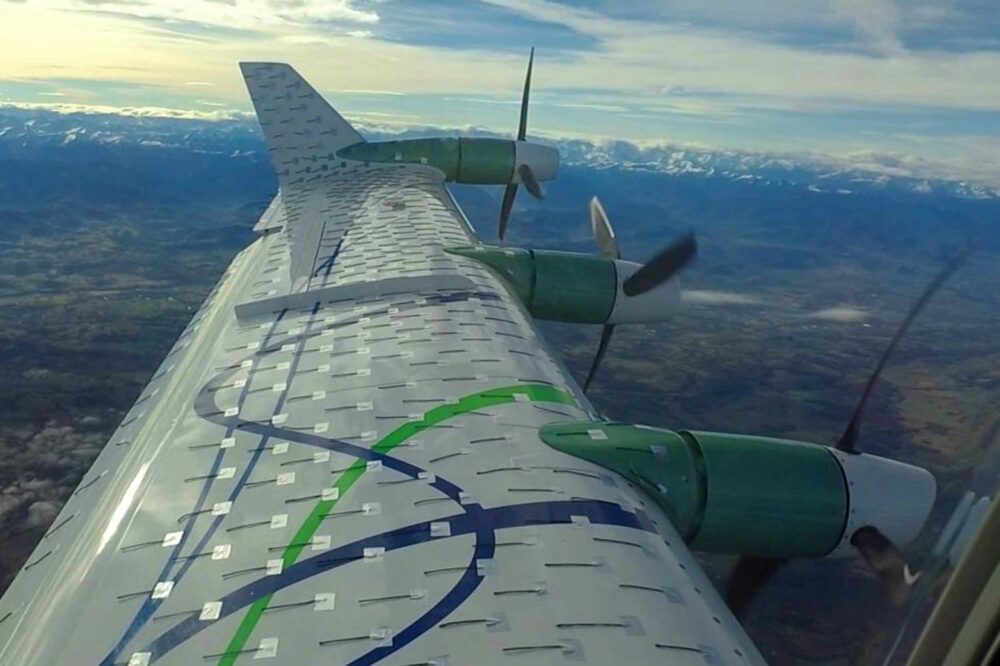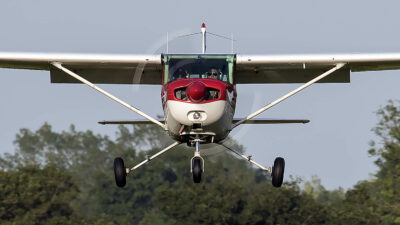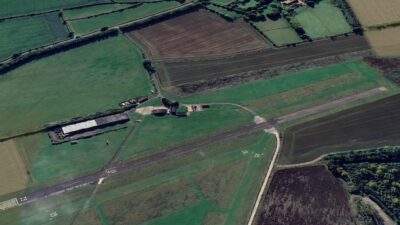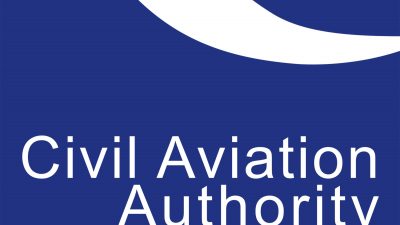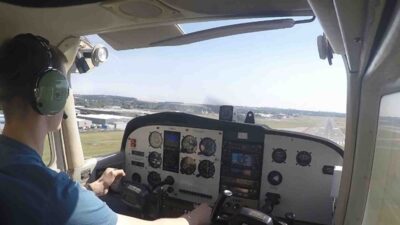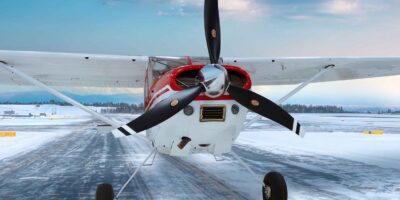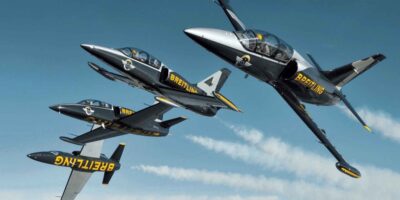An array of electric motors mounted on the leading edge of the wing is one of the designs being tested for electric aircraft – and one of the heavyweight contenders has just made its first flight: the EcoPulse developed by Daher, Safran and Airbus.
EcoPulse is based on a TBM, retaining the standard aircraft’s Pratt & Whitney turboprop engine, but with a hybrid-electric systsem to power six electric motors along the wing.
The EcoPulse demonstrator flew with its ePropellers activated, powered by a battery and a turbogenerator, from Tarbes Airport on 29 November 29 for a test flight which lasted approximately 100 minutes.
During the flight, the crew engaged the electric propellers and verified the proper functioning of the demonstrator’s flight control computer, high-voltage battery pack, distributed electric propulsion and hybrid electric turbogenerator.
EcoPulse’s first hybrid flight is the culmination of several technical milestones, including extensive ground tests and 10 hours of flight tests of the aircraft with the electrical system inactive.
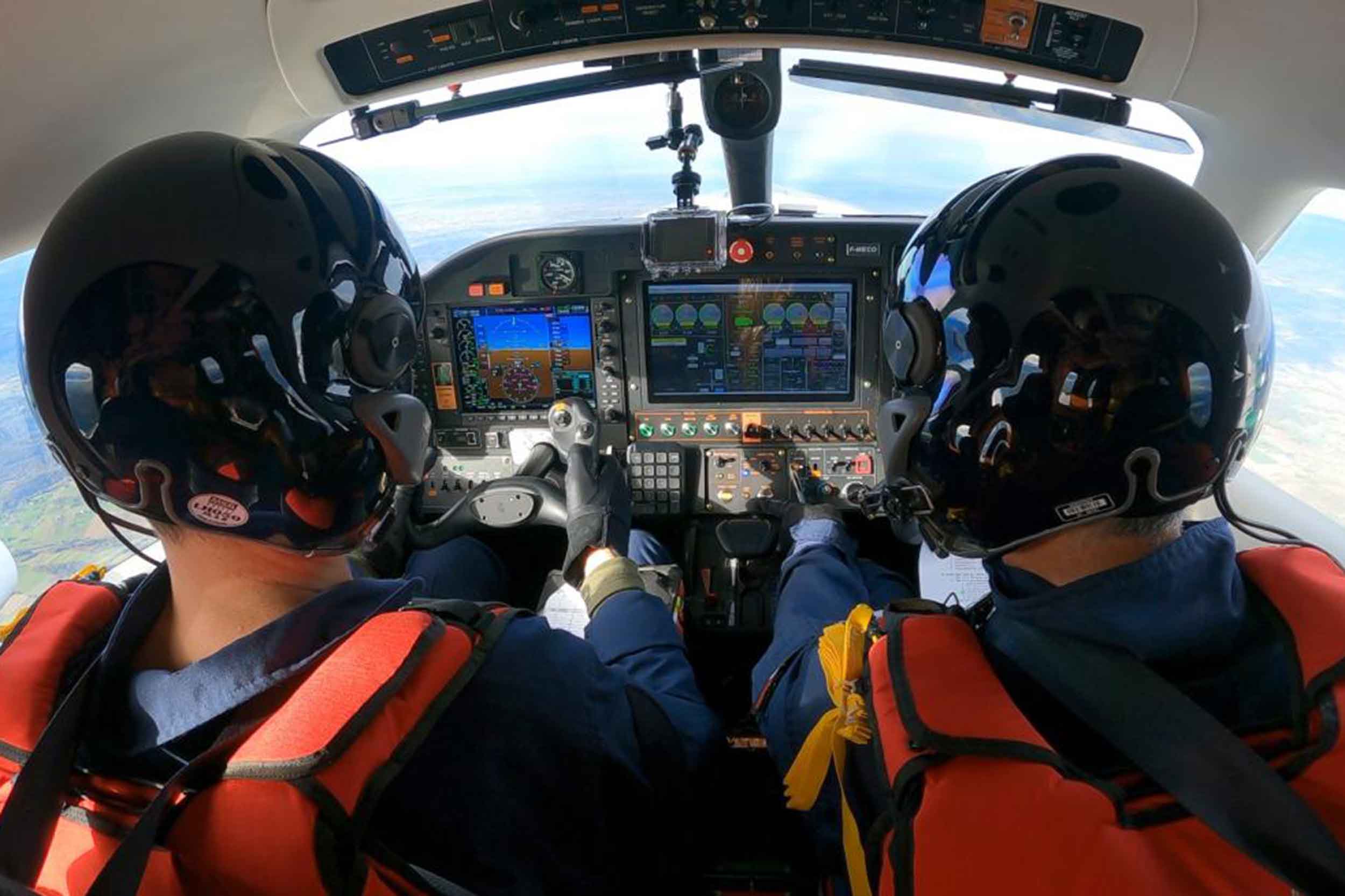
Moment of truth: test pilots switch on the wing-mounted electric motors. Photos: Safran
“We confirmed today that this disruptive propulsion system works in flight, which paves the way for more sustainable aviation,” said Eric Dalbiès, Safran’s Executive Vice President Strategy and Chief Technology Officer.
“The lessons learned from upcoming flight tests will feed into our technology roadmap and strengthen our position as leader in future all-electric and hybrid-electric propulsive systems.”
Sabine Klauke, Chief Technical Officer at Airbus, added, “High-energy density batteries will be necessary to reduce carbon emissions from aviation, whether for light aircraft, advanced air mobility or large hybrid-electric aircraft. Projects like EcoPulse are key to accelerating progress in electric and hybrid electric flight, and a cornerstone of our aim to decarbonize the aerospace industry as a whole.”

Take-off for EcoPulse
Aiming for aviation decarbonisation
Unveiled at the 2019 Paris Air Show, EcoPulse is one of the major collaborative projects in Europe aiming towards aviation decarbonisation. It is supported by CORAC (the French Civil Aviation Research Council), and co-funded by DGAC (the French Civil Aviation Authority) through France Relance (the French government’s economy recovery plan) and NextGeneration EU.
The demonstrator aims to evaluate the operational advantages of integrating hybrid-electric distributed propulsion, with specific emphasis on CO2 emissions and noise level reduction.
Based on a Daher TBM aircraft, EcoPulse is equipped with six integrated electric thrusters or e-Propellers supplied by Safran distributed along the wings. Its propulsion system integrates two power sources: a turbogenerator, i.e. an electric generator driven by a gas turbine (supplied by Safran), and a high-energy density battery pack (supplied by Airbus).
At the heart of this architecture is a Power Distribution and Rectifier Unit (PDRU), responsible for protecting the high-voltage network and for distributing the available electrical power, as well as high-voltage power harnesses (both provided by Safran).
The battery pack designed by Airbus is rated at 800 volts DC and can deliver up to 350 kilowatts of power. The demonstrator also benefits from the aerodynamic and acoustic integration expertise of the European aircraft manufacturer. Airbus also developed the Flight Control Computer permitting aircraft maneuvers using the ePropellers, and synchrophasing to support future aircraft acoustic recommendations.
The Ecopulse aircraft demonstrator will be shown at the Green Aero Days event in Pau, Franc on 6-7 December 2023.
EcoPulse


